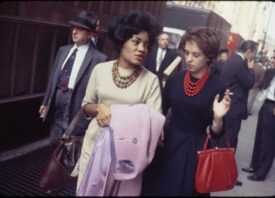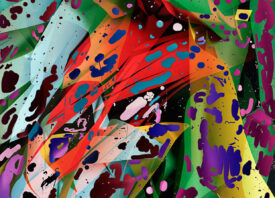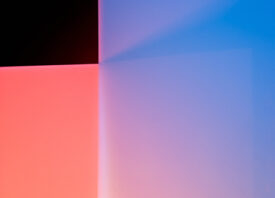Search this site
A Look Back at Saul Leiter’s Pioneering Color Work

Harlem 1960

Red Umbrella 1951
Color is the provenance of the painter, who must select the palette before setting brush to canvas. Color is sensation that shapes mood, as the light waves in color stimulate different emotional centers in the brain. Color is an affect that evokes a response, most alluringly an innate attraction and insatiable curiosity, an ability to be still, even spellbound, held in a gaze, enraptured by the sheer pleasure of hue and shade.
American photographer Saul Leiter was a master of color, a debt owed in great part to his training as a painter. Born in Pittsburgh in 1923 to Wolf Leiter, the internationally renowned Talmudic scholar, young Saul was intended for the Rabbinate – until his father opposed it. In 1946, he left Cleveland Theological College in 1946 and moved to New York to work as an artist.
Soon after his arrival, Leiter began to exhibit his paintings in Lower East Side galleries like Tanager Gallery, where they hung alongside those of Philip Guston, Philip Pearlstein and Willem de Kooning. Despite appealing to influential critics, Leiter was not a commercial success, and turned to photography after being introduced to it by abstract expressionist artist Richard Pousette-Dart.
Those first formative years revealed Leiter’s natural gift for creating perfectly composed of urban life, combined with his freethinking sensibilities, working in color long before it was fashionable. In the late 1940s. when Leiter got his start, color photography was considered vulgar, so desperate were the practitioners of the medium to distinguish themselves from the hobbyist or amateur. Yet, as Leiter proved in his early work, it is not the medium but the hand that wields it that makes it art.
Since it original publication in 2006, Saul Leiter: Early Color (Steidl, September 2018) has been in tremendous demand. This exquisite collection of street photographs made between 1948 and 1960 is nothing short of spectacular, as every image presented here is a mesmerizing masterpiece of light, shape, color, and form.
Here, Leiter’s background as a painter reveals itself, in his inimitable ability to transform rays of sunlight into confident brushstrokes. His instinct as a street photographer for the perfect moment is matched by his ability to render atmosphere as a, if not the, central figure in each of his pictures.
The world of Saul Leiter is filled with red umbrellas, candy-strip barbershop poles, neon lights, and 75-cent slices of pizza. It’s a place where shadows, silhouettes, and reflections go about their daily lives: doing things that were once perfectly natural and seem positively quaint today. A woman in Paris café stared intently at a letter she pens while the hands of a sign painter give equal care to the work they are hired to write.
But perhaps most beautifully about Leiter’s work is the fact that even though there are elements that date these images, their soul is universal. The image of condensation on a window, a woman waiting for the train, a man riding the bus: the ubiquity of moments we all experience but consider with any sense of reverence – this Leiter restores to us.

Don’t Walk 1952

Shoeshine 1956

Phone Call 1957

Snow 1960

Walking 1956

Street Scene 1957
All photos: © 2018 Saul Leiter. Book published by Steidl 2018 (8. Edition)



